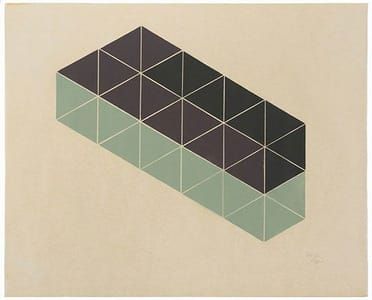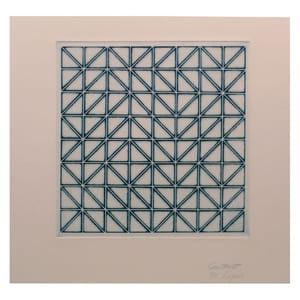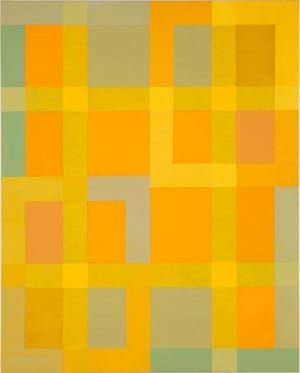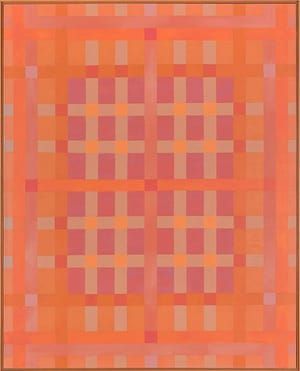
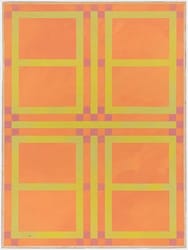
Casement, 2006
Vincent Longo
JG: One of the conversations I’ve had over and over with people that come into the gallery is the degree of improvisation in your work within this field of systemic, organized form. Can you talk a little bit about your process?
VL: It's all predicated on a statement that Picasso made many years ago. He said “I don't seek, I find.” I start with one thing and it leads to another. That's it. It keeps going until either I see something happening or not, and decide what to do. My overall intentions—what I hope the results turn out to be—is that whatever seems like a finished product, I want that to have a kind of particular action with the viewer that puts the viewer in affect. If I'm successful, the viewer is accepting automatically what is going on in the front, in terms of the meaning. That person has more chance of seeing what might be happening.
JG: You’ve said on occasion that you start not with a gridded surface, but that you turn the surface into a rectangle to find the image. Like Michelangelo, you’re seeking to find an image that’s already there.
VL: I always start with a vertical in the middle and I cross that with horizontal. That creates a center point. The ultimate aim is to make what seems to be the center area relate in some way or connect with the format itself. In a lot of the earlier grids, after doing that, which creates four quadrants, I then located the center again with diagonals and just kept going—first the vertical, then the horizontal, then diagonal. Eventually I had a grid. Once I got that, I tried to convey the distinction between what is a grid and what is a screen—what is the tone, what is the line, what is the weave—and I would play with those things visually. I'm not planning anything. I just let it go. In a lot of the prints that I've done that way, while I'm making all of these lines, repeating each other, I leave some blank. That's arbitrary as well because I can't really see through the heavy ground just what the result is until I take the ground off. Then I can see if it worked out.
JG: So what might look like a mathematical equation or some synthesis of rectangle next to rectangle possesses a structural logic that often becomes a greater and greater visual conundrum. Can you talk about that?
VL: It is mainly two grids placed over the other, overlapped. That's a hangover from my Cubist start. I started abstraction through Cubism at Cooper Union and what it creates is an overlapping space. Cubism accepted flatness, but I wanted to make a metaphor of the things that you don't see in the materials. The things that we step on, live in, are not really solid. It's like a universe of space; it was mainly a metaphor for that kind of non-existence....
(https://hamptonsarthub.com/2016/04/19/talking-with-vincent-longo-discusses-pollock-neolithic-abstraction-and-working-from-the-center/)
© 2006 Vincent Longo
Vincent Longo
artistArthur
coming soon
